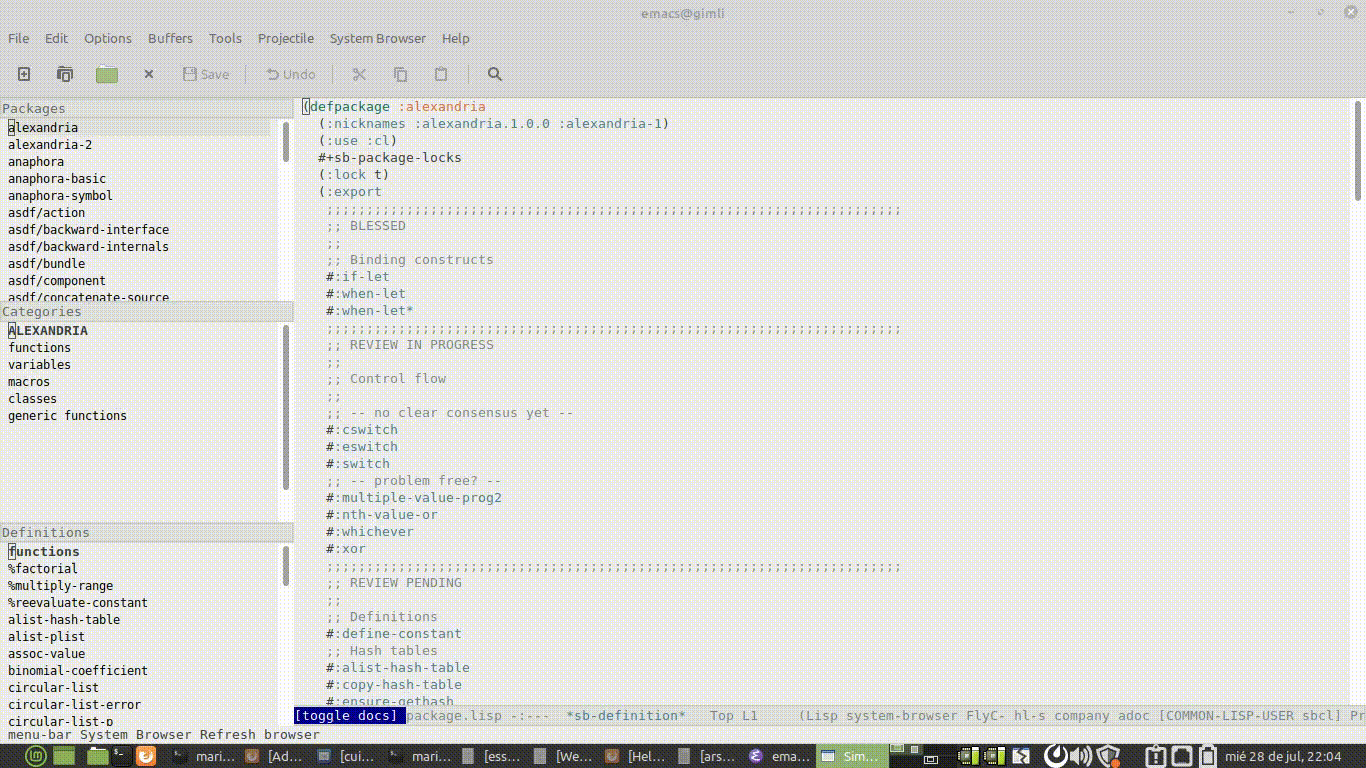Reputation: 2343
How to explore a Common Lisp image
Is there a way to explore the current state of a Common Lisp image (i.e. the loaded packages, available symbols, etc.)?
I know about the command (apropos "foo"), but I would like to see the current state of the whole image.
Is there such an explorer? I am using SBCL and SLIME (in Emacs).
Upvotes: 7
Views: 469
Answers (2)

Reputation: 18375
Here is a graphical, web explorer: https://github.com/lokedhs/docbrowser
Once started, it shows a first page with a list of all available packages loaded in the current image. Clicking on a package shows its functions and parameters, with their docstrings, and clicking on one shows its source code.
A similar one is livedoc, more recent and maybe more maintainted.
By the same proficient lisper, lisp-system-browser is a Slime extension (for Emacs then) that will act as a Smalltalk-ish browser: it will list all the available systems (think Quicklisp libraries) in a pane, when you click on a system it will list the available functions, macros and variables.
 ]3
]3
Upvotes: 2

Reputation: 38809
You can list all the existing packages with:
(list-all-packages)
For a given package, you can iterate over all its symbols or its external symbols:
(do-symbols (sym package)
...)
(do-external-symbols (sym package)
...)
You can also directly list all symbols in all packages:
(do-all-symbols (sym)
...)
When using Slime, inspecting a symbol with slime-inspect gives a summary of all things named after that symbol; for example, if I inspect 'number, the following is shown:
#<SYMBOL {5024C0CF}>
--------------------
Its name is: "NUMBER"
It is unbound.
It has no function value.
It is external to the package: COMMON-LISP [unintern]
Property list: NIL
It names the class NUMBER [remove]
It names a primitive type-specifier.
The NUMBER and COMMON-LISP texts above are also buttons, which you can click to visit the associated value. If you are only using SBCL, the same can be achieved by calling (find-class symbol nil) (the NIL indicates that no error should be reported if the symbol does not name a class), (symbol-plist symbol), etc.
There are some things which cannot be introspected according to the standard, like structs or the list of all user-defined types introduced with deftype (maybe other things). Depending on what you want to do, you may need to have a look at an implementation-specific way of doing this.
Thanks to David Hodge for pointing out the following:
A package called repl-utilities from Rob Warnock has a neat function called summary which shows each function, global variable with associated docstrings
Upvotes: 8
Related Questions
- How to use Common Lisp sort of like a smalltalk image
- How to browse class hierarchy with slime in common-lisp
- Viewing the Common Lisp HyperSpec offline via Emacs
- /Applications/Clozure CL.app/Contents/Resources/ccl/dx86cl64.image: cannot execute binary file
- What is a Lisp image?
- How can I run a lisp buffer in slime and see its output in emacs?
- can't find any symbol in common lisp in emacs with slime
- How to run Common Lisp code with Slime in Emacs Lisp
- Common Lisp -- configuring slime and emacs
- Handling Images in Clozure Cl

